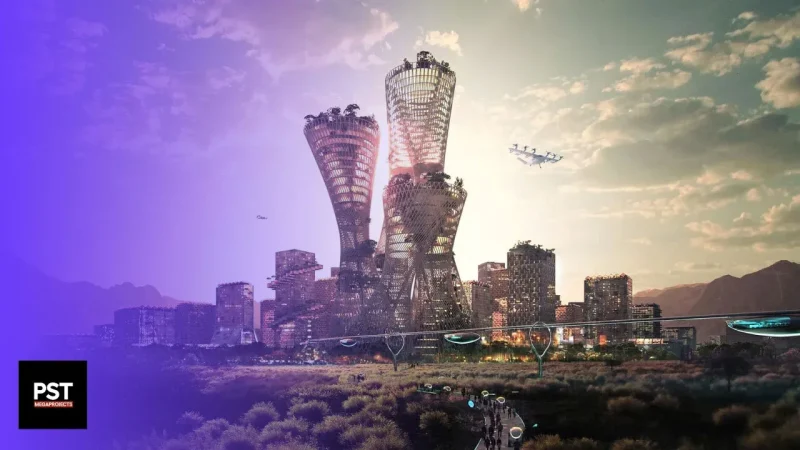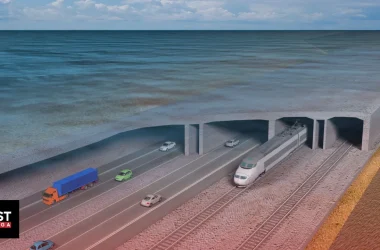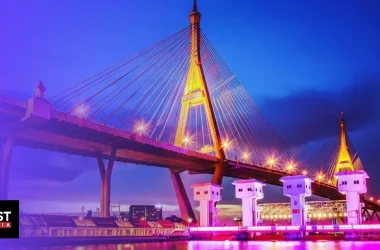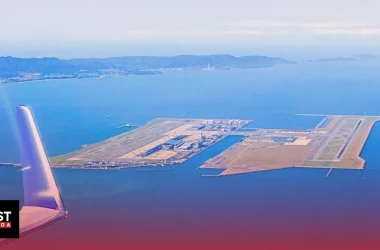Telosa is not merely a megacity but a vision for the whole of society. This gigantic city worth a mind-numbing $400 billion, is meant to be, in the words of those behind it, a ‘future utopia’. It is built with the goals of sustainable development, inclusion and technological progress in mind.
At least, that is how the billionaire behind the project makes it out to be. Sustainability and progress are huge buzzwords, but there must be something solid to back them up. With the initial phase set to be completed in 2030, one might think the project is already standing on solid ground. However, even the location of the city has not been decided yet. This raises a few red flags about the credibility of the project developers, but it turns out that this is only the beginning of the story.
It is worth taking a look at Telosa to see whether it’s really the next step in the progress of civilization, or just the dreams of a billionaire that will be stuck forever in the development stage.
What is Telosa?
Plans for the development of Telosa were first announced back in 2021 by billionaire Marc Lore, the former CEO of the gigantic retail chain Walmart. The name ‘Telosa’ is derived from the Greek word ‘Telos’, which roughly means ‘higher purpose’. This fits well with the aim of the project as revealed by Lore: to build a city where people are at the center.
In other words, the plan is not to just develop a cool-looking metropolis for tourists and rich people, but to focus on sustainable development, affordability, and the inclusion of diverse groups of people, especially underserved minorities. In Lore’s words, Telosa is meant to be a future ‘Utopia’ that serves as a model for other megacity projects and contributes to solving the problems of pollution, wealth gaps, and overpopulation.
In line with Lore’s vision, the masterplan for Telosa was developed by world-famous Danish architect Bjarke Ingels, who has experience with building future cities like Telosa, given that he’s been commissioned to design Woven City in Japan as well as Oceanix Busan and Bhutan’s Mindfulness City.
To achieve Telosa’s ambitious goals, the team behind the project is approaching the design and development of this megacity in a few different ways. First, there’s the city’s housing plan. Housing in Telosa will follow a Community Land Trust model. This means that all the land in Telosa will be owned and managed by a trust, which is the city’s local community government in this case, rather than individual homeowners.
Residents will be able to lease their homes and enjoy all the rights of a homeowner but without actually owning the land. This model actually benefits Telosa’s residents because most real estate profits will be managed by the government and added to the trust.
For example, the government can add conditions to the lease to the effect that homeowners must give a certain percentage of their profit to the trust if they decide to sell their property. Additionally, a community government managing these real estate profits is preferable to private real estate developers and brokers which will pocket the profits rather than the money returning to the community.
Then money from the trust will be used to reduce housing costs and give financial assistance to underprivileged people, improving the overall affordability and socioeconomic conditions of the city.
In fact, this housing model has been successful in various parts of the US. According to the Democracy Collaborative, there are currently 277 community land trusts in the US. 79% of the residents of these areas are first-time home buyers, 82% earn half or less of their local area median income, and 31% identify as people of color. It appears that at least this aspect of Telosa is backed up by successful case studies elsewhere.
As for the city’s urban planning, Telosa will be designed with most services within a 15-minute commute in one area. The rationale behind the design is to separate residential areas from service areas and keep residential areas as calm as possible. Public transportation will be provided, and only electric cars will be used inside the city to avoid air pollution.
While these are both impressive goals, what is arguably one of Telosa’s most ambitious objectives is to become a completely self-sustaining city. To produce more energy than its initial 50 thousand residents consume, solar panels will be included all over the city as well as several strategically placed windmills. As for supplying its own food and water, one of Telosa’s largest buildings – the Equitism tower – will feature a water storage system and aeroponic farms.
The tower is intended to be a beacon for the city and symbolic of the values this “utopia” was built upon. But it seems utopia can’t be built without a hefty price tag. The project’s initial phase is estimated to cost $25 billion and will be completed as soon as 2030.
This ambitious timeline has raised a few eyebrows, particularly since the city is expected to house 50,000 residents by the time the initial phase is completed. All together, the project is expected to cost a staggering $400 billion, and will be completed around 2050. The man behind Telosa envisions a bustling metropolis of 5 million people living in the city once it is finished.
Is Telosa Realistic?
Supporters and opponents of this project can both agree that Telosa is undoubtedly a huge shift from the typical futuristic megacities designed only to attract tourists and rich people. This is why Lore believes it’s better than The Line, Saudi Arabia’s $1 trillion megacity currently under development. According to Lore, the Line’s problem is that it prioritizes tourism and luxury over affordability and sustainability. Telosa aims to be quite the opposite.
However, all these plans should be taken with a grain of salt since these claims made by project developers are usually driven by their need for publicity and investors. It wouldn’t be the first time that a futuristic megacity was announced, only to fail to achieve any of their plans.
A good example of this is California City. When it was first announced in 1958, it was claimed that it would become larger than Los Angeles or San Francisco. Sixty years later though, the city is now a ghost town, inhabited by only 15,000 people.
A more recent example is Forest City – a $100 billion green megacity announced in 2006. Although most it has been built, the project has been halted due to the collapse of its main developer, Country Garden. But even before this, Forest City struggled to become the lively hub of 700,000 people it was envisioned as. Now, it’s a ghost town inhabited by just a few thousand people.
Megacities often fall victim to environmental or socioeconomic factors unaccounted for in the unrealistic and overly ambitious plans of project developers. This could very well be the case for Telosa. Based on the facts, the feasiblilty of Telosa’s success – as envisioned now – appears pretty unlikely. And the deeper one digs, the more skeptical you will become.
The Many Challenges Telosa Faces
Even the location of Telosa hasn’t yet been decided. According to the current plans, it will be somewhere in the Southwest desert areas, most likely in Arizona or Utah. But beyond that nothing is known. This already casts some sizeable doubt on the credibility of the project developers.
Even if we set that aside, there are a number of reasons to question the developers’ ability to make meaningful progress, let alone complete the project.
One glaringly obvious problem, is that Telosa will be built in the middle of the desert. While this means the land will be very cheap, its likely not cheap enough to compensate for the extremely high expenses of building all the necessary utilities and transporting all the materials needed for construction.
A city of 5 million people would need a huge amount of water to sustain itself, but Telosa will be far away from natural water sources. It’s doubtful that groundwater alone can sustain a city of this size. It also doesn’t help that Telosa’s designs include a great number green areas which will require water too.
Building infrastructure from scratch in the middle of a desert will be a great challenge, to say the least. Trying to connect Telosa to natural water resources and existing infrastructure like sewage systems will require a wide and far-reaching infrastructure network; this is a megaproject on its own. Aside from the cost of building such a network, the cost of regularly maintaining it is the real challenge as evident in suburbs across the USA.
Because suburbs stretch across large areas, connecting all the houses to amenities requires a wide infrastructure network. This type of network is usually expensive to maintain, which is why it’s estimated that, compared to other types of urban planning, suburbs cost an additional $1 trillion annually. This is roughly 6% of the entire US GDP.
Unless Telosa is constructed in a radically different way, it will have a very similar problem and spending billions on maintenance does not seem feasible. This brings up another issue: funding.
According to the developers, Telosa will be funded by private investors, philanthropists, and possibly government funds. The pressing question here is whether there will be enough investors to channel $400 billion into the project. In the case of The Line, which is also being built in the middle of the desert, the project is being backed by the Saudi Arabian government. But Telosa will not be able to rely on the US government’s deep pockets for funding.
Even if all these issues are resolved, Telosa will be located in a remote, high-temperature area which may deter many prospective residents.
The Bottom Line
Having an ambitious plan for the future is one thing, but facing the difficult practical realities of the present is a completely different matter. As some of Telosa’s critics have pointed out, a more effective way of improving equitable living standards would be to invest in already existing cities to make them more environment-friendly and affordable. Lore’s obsession with building utopia in the desert is a sign that this megaproject could be more about publicity than reality. But time will tell if Telosa becomes America’s new shining city on the hill.
Disclaimer
Please visit and read our disclaimer here.









